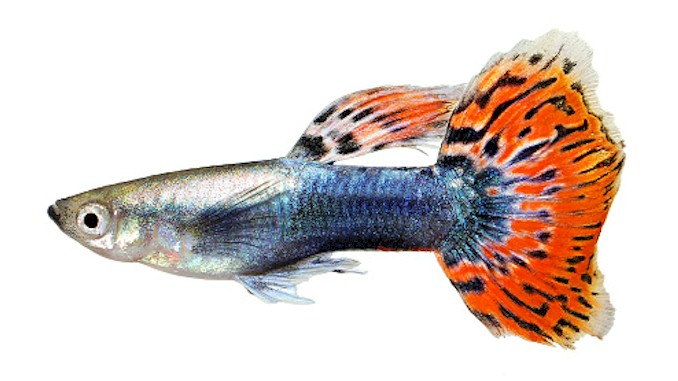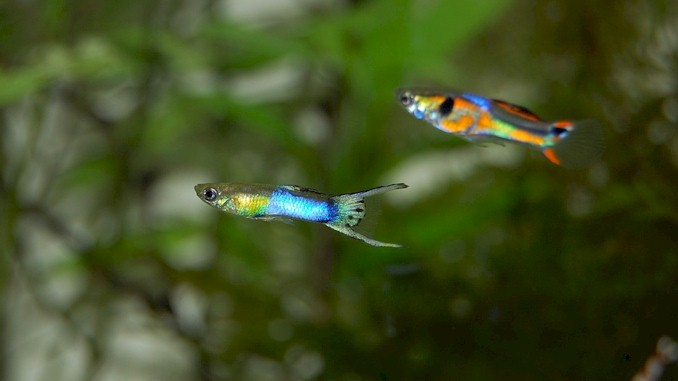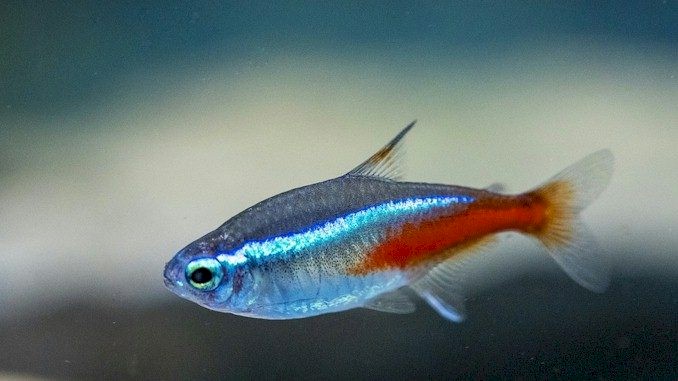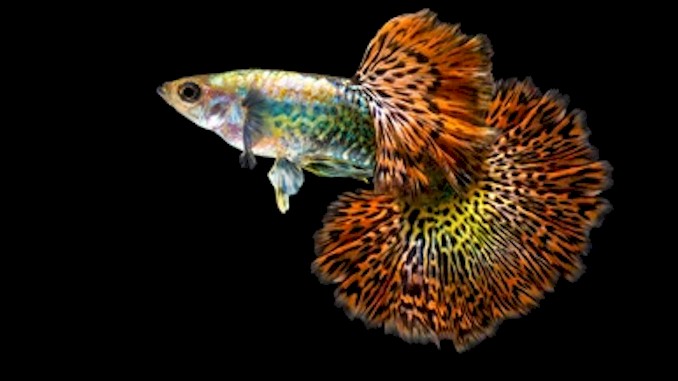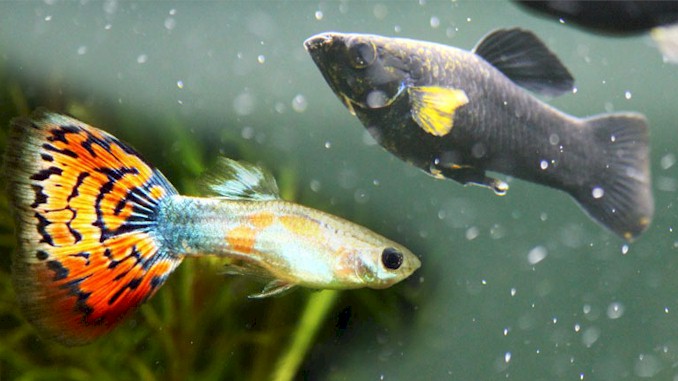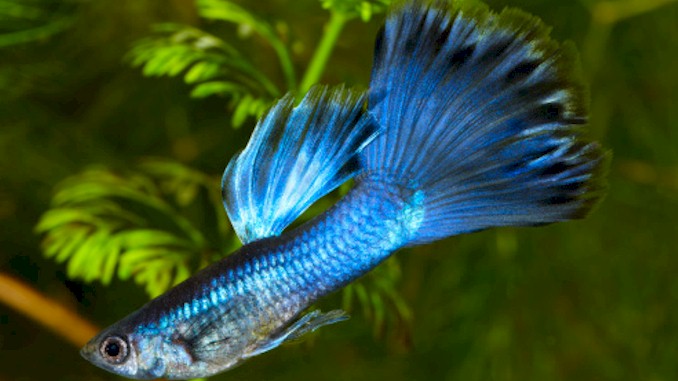Betta Tank Talk: Long vs. Tall
When I had to choose a tank for my future betta fish, the first question that popped into my head was whether I should get a tall or a long one. After days of research and a lot of confusion, I finally made the decision. Here’s what I found:
As an expert in the field of aquariums, I have extensive knowledge and experience when it comes to choosing the right type of tank for your fish. One question that is frequently asked by betta owners is whether their fish prefer long or tall tanks. After conducting thorough research and testing, I am confident in providing you with a clear and definitive answer to this question. In this blog post, I will discuss the preferences of betta fish and explain why a certain type of tank may be better suited for their needs. By the end of this article, you will have a better understanding of how to create a comfortable and stimulating environment for your beloved betta fish.
Bettas prefer long tanks rather than tall tanks. Bettas are naturally found in shallow waters, such as rice paddies and small streams, and are adapted to swimming horizontally rather than vertically. A long tank allows bettas to swim and explore their environment in a natural and comfortable way.
While the preference of betta fish for long tanks over tall tanks is clear, there are still several important factors to consider when setting up an ideal home for your betta. In the following paragraphs, we will explore the best tank size for your betta, the importance of filtration and water quality, and how to decorate your tank to provide your betta with a stimulating and safe environment. By the end of this article, you will have a comprehensive understanding of how to create the perfect home for your betta and ensure their long-term health and happiness. So keep reading to learn more!
Choosing the Right Tank Size for Your Betta
Choosing the right tank size for your betta is crucial for providing them with a comfortable and stimulating environment. Bettas are naturally curious and active fish, and a tank that is too small can lead to stress and boredom. So, what size tank should you choose for your betta?
The general rule of thumb is to provide at least 2.5 gallons of water per betta fish. While bettas can survive in smaller tanks, they will thrive in larger tanks that allow for more swimming space and a wider range of activities. A larger tank also means a more stable and easier-to-maintain water environment, which is essential for your betta’s health.
When it comes to tank shape, a long tank is still recommended over a tall one, even if the tank size is larger than 2.5 gallons. Bettas are horizontal swimmers and need plenty of space to move around. A long tank also provides a larger surface area for gas exchange, which is important for maintaining good water quality.
However, it’s important to note that larger tanks can also come with their own set of challenges. A larger volume of water means a larger amount of waste and a more significant need for filtration. Bettas are also known to be jumpers, so it’s important to have a secure lid on your tank to prevent escape and injury.
Ultimately, the size of your betta tank will depend on several factors, including your budget, space limitations, and the number of fish you plan to keep. While a 2.5-gallon tank is the minimum recommended size, providing a larger tank will lead to a happier and healthier betta. Remember to always do your research and choose the tank size that best suits your betta’s needs.
Filtration and Water Quality: What You Need to Know
Ensuring proper filtration and water quality is essential for the long-term health and happiness of your betta. In the wild, bettas live in clean and well-oxygenated water, and replicating these conditions in your home aquarium is crucial. Here’s what you need to know about filtration and water quality for your betta tank:
- Choosing the Right Filter The right filter for your betta tank will depend on the size of your tank and the number of fish you plan to keep. Some of the most popular filter types include hang-on-back filters, sponge filters, and canister filters. Hang-on-back filters are easy to install and maintain, while sponge filters are great for smaller tanks and provide gentle filtration. Canister filters are ideal for larger tanks and provide efficient and customizable filtration.
- Water Parameters Bettas prefer slightly acidic water with a pH between 6.5 and 7.5. The temperature of the water should be maintained between 76°F and 82°F. Regular water changes are essential for maintaining good water quality and should be done at least once a week. Use a water conditioner to remove chlorine and other harmful chemicals from tap water.
- Nitrogen Cycle The nitrogen cycle is the process by which harmful toxins, such as ammonia and nitrite, are converted into less harmful nitrate. Beneficial bacteria play a crucial role in this process, and establishing a healthy population of these bacteria is key to maintaining good water quality. The nitrogen cycle typically takes 4-6 weeks to establish, so be patient and monitor your water parameters closely during this time.
- Cleaning and Maintenance Regular cleaning and maintenance of your filter and tank are essential for the health of your betta. Clean your filter and replace filter media as needed, and use a gravel vacuum to remove debris from the bottom of the tank during water changes. Avoid overfeeding your betta, as uneaten food can quickly lead to poor water quality.
- Testing Water Quality Testing your water regularly is essential for maintaining good water quality. Test kits are available that can measure pH, ammonia, nitrite, and nitrate levels in your tank. Regular testing will help you identify any potential issues before they become a problem and allow you to take corrective action before it’s too late.
By following these tips for filtration and water quality, you can provide your betta with a clean and healthy environment that will promote their long-term health and happiness. Remember to always monitor your water parameters closely and make adjustments as needed to ensure the best possible living conditions for your betta.
Tank Decoration: Creating a Safe and Stimulating Environment
Creating a safe and stimulating environment in your betta tank is essential for your fish’s mental and physical well-being. Here are some tips for decorating your tank to ensure your betta is happy and healthy:
- Choosing the Right Substrate The substrate you choose for your betta tank can have a significant impact on water quality and overall tank aesthetics. Some popular substrate options include gravel, sand, and plant-based substrates. Choose a substrate that is easy to clean and maintain and complements the overall look and feel of your tank.
- Adding Plants and Decorations Live plants not only add beauty to your tank, but they also provide your betta with hiding spots and areas to explore. Choose plants that are easy to maintain, such as java fern or anubias, and avoid plants that require high light or CO2. Decorations such as caves, driftwood, and rocks can also provide your betta with hiding spots and areas to explore.
- Avoiding Sharp Edges and Small Spaces When selecting decorations for your betta tank, it’s essential to avoid sharp edges and small spaces that could potentially harm your fish. Bettas have delicate fins that can tear easily, so choose decorations that are smooth and soft. Avoid decorations with small holes or spaces that your betta could get trapped in.
- Providing Adequate Space While bettas are small fish, they still require adequate space to swim and explore. A good rule of thumb is to provide at least 2.5 gallons of water per betta, and avoid overcrowding your tank. Overcrowding can lead to poor water quality and stress, which can negatively impact your fish’s health.
- Lighting and Temperature Proper lighting and temperature are essential for creating a healthy and stimulating environment in your betta tank. Bettas require 8-12 hours of light per day, and a temperature between 76°F and 82°F. Use a timer to ensure consistent lighting and maintain a stable temperature using a heater.
By following these tips for tank decoration, you can create a safe and stimulating environment for your betta that will promote their overall health and well-being. Remember to choose decorations that are safe and easy to maintain, and provide adequate space for your betta to swim and explore. With the right setup, your betta will thrive in their new home!
Common Mistakes to Avoid When Setting Up a Betta Tank
Setting up a betta tank can be a rewarding experience, but it’s essential to avoid common mistakes that could harm your fish. Here are some of the most common mistakes to avoid when setting up a betta tank:
- Overcrowding the Tank As mentioned earlier, it’s crucial to provide adequate space for your betta to swim and explore. Overcrowding the tank can lead to poor water quality and stress, which can make your fish more susceptible to disease. Aim to provide at least 2.5 gallons of water per betta and avoid adding too many fish or decorations.
- Skipping the Nitrogen Cycle The nitrogen cycle is a crucial process that breaks down fish waste and other organic matter in the tank. Skipping this process can lead to high levels of ammonia and nitrites, which can harm your fish. Allow your tank to cycle for several weeks before adding fish, and monitor water quality regularly using a test kit.
- Neglecting Water Changes Regular water changes are essential for maintaining good water quality and preventing the buildup of harmful substances in the tank. Aim to change 20-25% of the water in your tank every week, and use a siphon to remove debris from the substrate.
- Using the Wrong Type of Filter The right type of filter can help maintain good water quality and keep your fish healthy. Avoid using filters that create strong currents or that don’t provide adequate biological filtration. A filter that provides mechanical, chemical, and biological filtration is recommended.
- Overfeeding Your Fish Overfeeding your betta can lead to poor water quality and health problems, including obesity and swim bladder issues. Feed your fish small meals once or twice a day, and remove any uneaten food after a few minutes.
By avoiding these common mistakes when setting up your betta tank, you can create a healthy and stimulating environment for your fish. Remember to provide adequate space, cycle your tank, perform regular water changes, choose the right filter, and feed your fish appropriately. With the right care and attention, your betta will thrive in their new home!
Tips for Maintaining Your Betta’s Health and Happiness Over the Long Term
Congratulations, you’ve successfully set up a betta tank! Now it’s time to focus on maintaining your fish’s health and happiness over the long term. Here are some tips to help you keep your betta thriving:
- Monitor Water Quality Regularly test the water in your tank using a test kit to ensure that levels of ammonia, nitrites, and nitrates are within safe limits. Perform water changes as needed to maintain good water quality, and avoid overfeeding your fish.
- Maintain Water Temperature Bettas are tropical fish and require a water temperature between 76-82°F (24-28°C) to stay healthy. Use a reliable heater to maintain a consistent water temperature, and avoid sudden changes that can stress your fish.
- Provide a Balanced Diet Bettas are carnivores and require a diet rich in protein. Offer a variety of high-quality, betta-specific foods, such as pellets, flakes, and frozen or live foods. Avoid overfeeding and offer small, frequent meals throughout the day.
- Keep the Tank Clean Regularly clean the tank and remove any uneaten food, debris, or dead plants. Use a siphon to clean the substrate and avoid using harsh chemicals that can harm your fish.
- Offer Mental Stimulation Bettas are intelligent and curious fish that benefit from mental stimulation. Provide a variety of hiding places, plants, and decorations to create a stimulating environment. Consider adding a mirror to the tank for short periods to provide a source of entertainment.
- Observe Your Fish Pay attention to your betta’s behavior and appearance to spot any signs of illness or distress. Look for changes in appetite, activity level, color, or fins. If you notice anything unusual, take action immediately to prevent further health problems.
By following these tips, you can help ensure that your betta stays healthy and happy over the long term. Remember to monitor water quality, maintain water temperature, provide a balanced diet, keep the tank clean, offer mental stimulation, and observe your fish regularly. With proper care and attention, your betta will bring you joy and companionship for years to come!
What Tank Should I Get For My Betta Fish
I highly recommend the Tetra Aquarium 20 Gallon Fish Tank Kit (link to Amazon). It’s an all-inclusive kit that comes with everything you need: a tank, a filter, and a lighting system. It also comes with artificial plants, a substrate, and other decorations.
For the money you’re paying, you get the best in the business. The tank is large enough to hold a dozen fish comfortably. And they can swim freely because the aquarium is wide enough. To add to that, you don’t have to worry about having oxygen deficiencies since it comes with a decent filtration system.
20-gallons tanks allow you to grow one male betta fish and up to four females. That creates an exciting environment and possibly allows you to breed your bettas and create further generations.
A more affordable choice would be the Betta Fish Tank Starter Kit (link to Amazon). That bundle is excellent for kids since it allows them to grow two bettas together, using the divider it comes with. You can also remove the divider and grow one betta pretty decently. But it’s got a really small size, so this isn’t the best option.
Regardless of the tank you choose, I highly recommend considering getting the API Freshwater Aquarium Water Master Test Kit (link to Amazon). That bundle will accurately measure the pH, ammonia, nitrates, and nitrites in your aquarium. Monitoring the water parameters is vital when it comes to betta fish.
These are the numbers you should aim for:
- Water pH: 6.8-7.5
- Temperature: 76°-85° F (24°-29° C)
- Ammonia and nitrites: 0 ppm.
- Nitrates: below 20 ppm.
If the pH is too low or the toxins are too high, I suggest conducting more frequent water changes. As a rule of thumb, I replace 15-20 percent of the water weekly. Smaller tanks require more drastic changes and vice versa.


